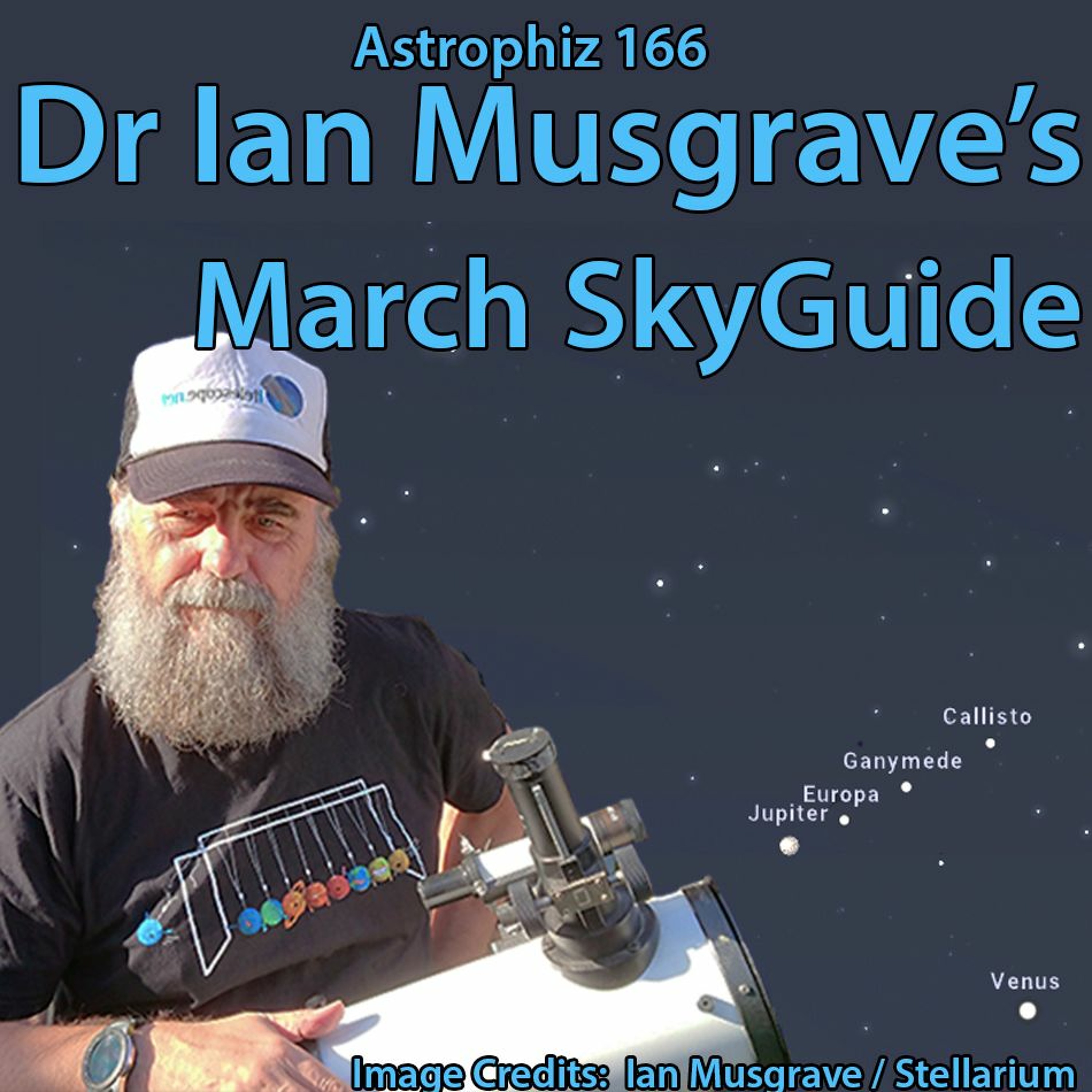Astrophiz166 - March SkyGuide

b'This month the planetary action is still largely in the western evening skies.\\nEarth is at equinox on Tuesday, 21 March. \\nAt this time day and night are roughly equal in duration.\\n\\nMarch 2; Venus and Jupiter at their closest. \\nMarch 3; Mercury and Saturn close low in the twilight. \\nMarch 4; apogee Moon. \\nMarch 7; Full Moon. \\nMarch 15; Last Quarter Moon. \\nMarch 20; the thin crescent moon near Saturn in the morning twilight. \\nMarch 20; Moon at perigee. \\nMarch 22; New Moon. \\nMarch 24; the crescent Moon is very close to Venus in the twilight. \\nMarch 29; First Quarter Moon. \\nMarch 28; the Moon is close to Mars. \\nMarch 30, Mars close to open cluster M35. \\nMarch 31; Venus is just 1.5 degrees from Uranus.\\n\\nMERCURY:\\nMercury falls back towards the eastern horizon and is lost to view early in the month, reappearing in the evening twilight late this month. \\nOn the 3rd Mercury and Saturn are about 1 degree apart, deep in the twilight. \\nYou will need a level, unobstructed horizon and binoculars to see the pair at their best.\\n\\nVENUS: \\nVenus climbs yet higher in the evening sky this month; the low angle of the ecliptic means it never gets really high although it is prominent at nautical twilight by end of the month when Venus is (just) visible when the sky is full dark. \\nVenus has three close encounters this month. \\nThe stand out is on the 2nd when Venus and Jupiter are just 0.5 apart, visible well before nautical twilight, difficult telescopically. \\nOn the 24th Venus will be just 1\\xb0 from the crescent moon, making a fine binocular sight. \\nVenus currently looks like a gibbous Moon. \\nOn the 31st Venus is just 1.5 degrees from Uranus. \\n\\nMARS:\\nMars is making a line with Aldebaran and Beta Taurii. \\nAt the beginning of the Month Mars also forms a triangle with Beta and Zeta Taurii (the tips of the horns). \\nMars is shrinking in telescopic view but is still a worthwhile telescopic object this month. \\nBy the end of the Month Mars is close to the open cluster M35, an excellent sight in binoculars. \\nOn the 28th Mars is around 4\\xb0 from the waxing moon (very obvious as the brightest object near the moon), mid power binocular fields will just fit the pair in.\\n\\nJUPITER:\\nJupiter is lowering in the north-western evening sky. \\nJupiter and Venus have been approaching each other all February, and on the 2nd on March they are just 0.5\\xb0 apart. \\nJupiter continues to sink towards the horizon and is lost to view around mid month.\\n\\nSATURN:\\nSaturn enters the morning skies but is only really visible from mid-March. \\nOn the 3rd Saturn is about 1 degree from Mercury deep in the twilight. \\nYou will need a level, unobstructed horizon and binoculars to see the pair at their best. On the 20th Saturn is close to the thin crescent moon low in the morning twilight.'